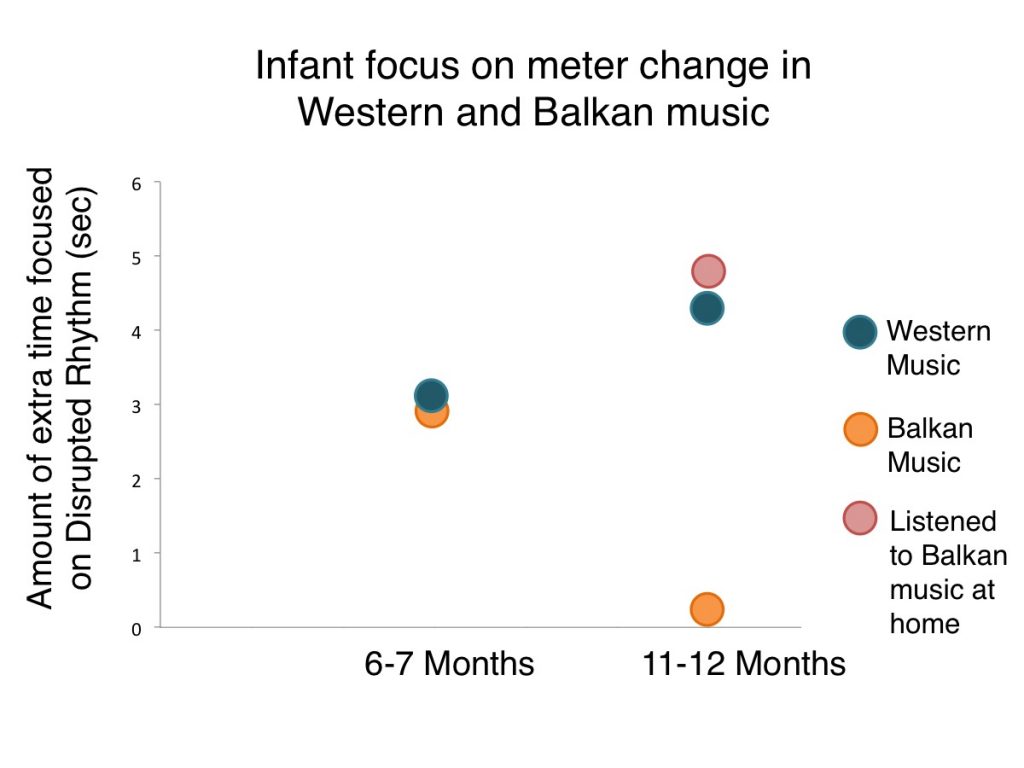
Researchers also tested another group of infants. These 12-month-old infants listened to Balkan folk music at home for two weeks. They listened to the music for 20 minutes everyday before their lab visit. Unlike the 12-month-old infants in the other study, these babies were able to notice meter changes in the foreign Balkan music.
Do these results seem familiar? In our previous module on early language learning, we talked about a ‘sensitive period.’ During this period, infants learn speech sounds in their native language quickly. During this same period, their ability to detect foreign speech sounds declines. In a similar way, infants may have a period when their brains are particularly primed to learn some basic musical components, like meter. This doesn’t mean that babies need to be enrolled in music lessons. But it does suggest that babies are listening to and learning from the music around them. They are building rich connections to music through their interactions with us and the music we love.
-
- Beat
- the regular pulse of music
- Electroencephalography (EEG)
- a non-invasive method used to measure electrical activity in the brain
- Executive function
- a set of mental abilities that help us focus attention, remember information, and switch between tasks
- Magnetoencephalography (MEG)
- a non-invasive brain imaging technique used to determine which regions of the brain are active
- Meter
- a grouping of beats with specific patterns
- Neuroplasticity
- the ability to change how neurons in our brain are connected to each other
- Pitch
- the measure of how high or low we perceive sounds to be
- Pro-social behavior
- actions that are intended to help others
- Synchronized movement
- movements that occur in sync with musical beats and, or with other people
- Timbre
- the quality of a musical sound or voice that allows us to tell the differences between instruments or voices